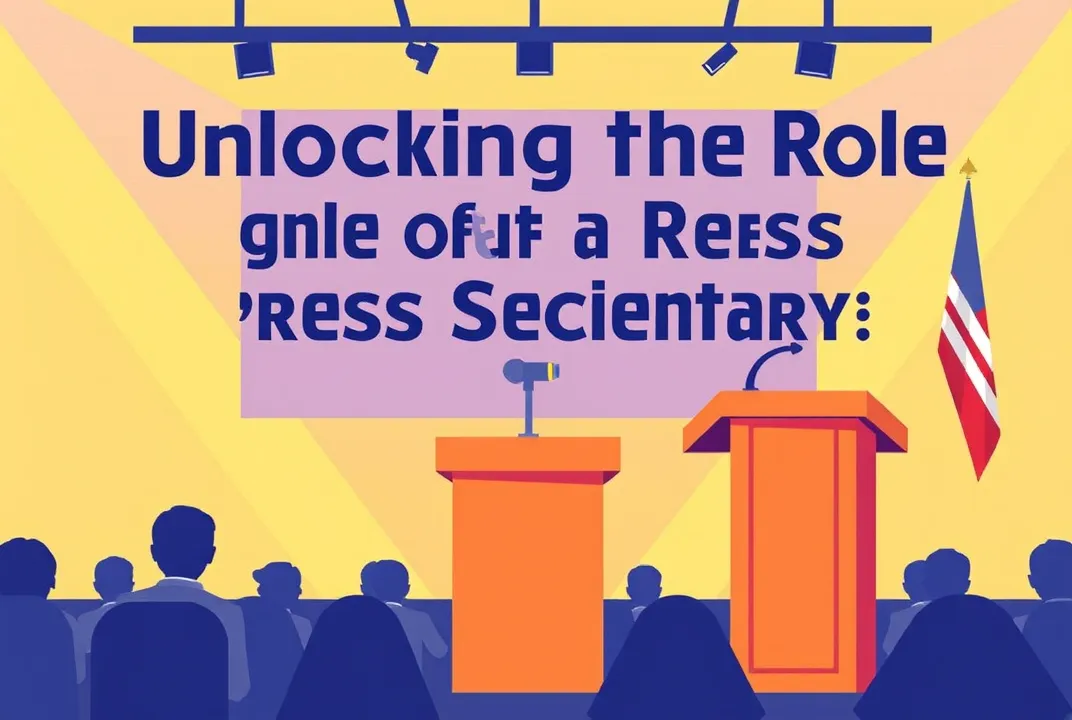The Role of a Press Secretary: A Behind-the-Scenes Perspective
In the bustling heart of Washington, D.C., where decisions ripple across the nation, the role of a press secretary unfolds like a tightly wound spring. Each day, they step into the limelight, poised at the podium, poised to articulate the administration's stance on critical issues. However, the journey to that podium is filled with intricate maneuvering, strategic thinking, and a deep understanding of the political landscape. This article delves into the often-overlooked world of press secretaries, unraveling the secrets behind their pivotal roles in shaping public perception and communication strategies.
The Essential Role of a Press Secretary
The press secretary serves as the primary spokesperson for the president or government official, acting as a bridge between the administration and the public. This role encompasses a variety of responsibilities, including crafting press releases, managing media relations, and preparing for press conferences.
The Art of Communication
One of the press secretary's most crucial tasks is to communicate effectively, not just with the media, but with the public. This requires a masterful command of language and an ability to distill complex policies into digestible sound bites. For example, during the COVID-19 pandemic, many press secretaries faced unprecedented challenges in conveying public health information while navigating a 24-hour news cycle.
Crisis Management
Crisis management is another area where press secretaries shine. They are often thrust into the spotlight during scandals or emergencies, needing to provide clarity and direction. A recent example includes the handling of the withdrawal from Afghanistan in 2021, where press secretaries had to respond to rapidly changing news cycles, ensuring that the administration's message remained coherent amid chaos.
Behind the Scenes: The Preparation
Before stepping onto the stage, a press secretary undergoes extensive preparation.
Research and Anticipation
Research is paramount. A successful press secretary must stay ahead of emerging issues, anticipating questions from reporters and preparing comprehensive, fact-based responses. In political climates rife with misinformation, this preparation can significantly impact public perception.
Mock Press Conferences
In preparation for a high-stakes press briefing, mock press conferences are often conducted. These simulations allow press secretaries to refine their messaging and develop strategies for responding to tough questions. The intensity of these rehearsals can be likened to sports teams practicing for a championship game, where every detail counts.
Building Relationships with the Media
A skilled press secretary understands that the relationship with the media is not merely transactional; it is foundational to the job.
Trust and Credibility
Building trust with journalists is critical. Press secretaries often provide exclusive information to reputable media outlets, fostering a sense of reliability. The goal is to ensure that when news breaks, the administration’s narrative is included in the conversation.
Managing Press Briefings
Press briefings themselves are strategic events. A typical session involves not just delivering statements but also reading the room—recognizing when tensions run high and when to deflect or pivot a question. A well-executed briefing leaves the audience feeling informed, while a poorly managed one can lead to a media frenzy.
The Impact of Social Media
In today’s digital age, the role of a press secretary has evolved dramatically with the advent of social media.
Rapid Communication
Social media platforms allow for immediate communication, enabling press secretaries to directly address the public and circumvent traditional media channels. This shift has empowered them to shape narratives in real time. For instance, during significant policy announcements, a press secretary might utilize Twitter to provide live updates, engaging with citizens instantly.
Challenges of Misinformation
However, this immediacy comes with challenges, particularly concerning misinformation. Press secretaries must combat false narratives swiftly, reinforcing the importance of accurate communication. The recent surge in conspiracy theories regarding election integrity serves as a case study in how press secretaries must actively counter misleading information.
The Personal Side of the Job
While the role of a press secretary may seem glamorous from the outside, it often comes with personal sacrifices.
High-Stress Environment
The job is characterized by long hours and immense pressure, as press secretaries navigate the complexities of government communications while maintaining their composure in front of the cameras. The stress of constant scrutiny can take a toll, leading to burnout if not managed properly.
Balancing Act
Moreover, balancing personal life with the demands of the job is a delicate act. Many press secretaries have families, and the unpredictability of their work schedules often means missing significant events. The dedication required to perform at the highest level can be both rewarding and isolating.
The Legacy of a Press Secretary
As administrations change, the legacy of a press secretary can leave a lasting impact on the political landscape.
Influencing Public Opinion
For instance, press secretaries like George Stephanopoulos and Ari Fleischer have shaped how government communications operate today. Their approaches to transparency and media engagement have influenced new generations of press secretaries, showcasing the importance of adaptability and innovation in the role.
Historical Significance
The historical significance of press secretaries extends beyond their immediate impact. They play a crucial role in shaping presidential legacies through their communication strategies. The way information is disseminated can profoundly affect how administrations are perceived long after their time in office.
Conclusion: The Unsung Hero Behind the Podium
The role of a press secretary is a fascinating blend of art, strategy, and communication. As they stand behind the podium, they are more than just voices for their administrations; they are architects of public discourse, navigators of crises, and guardians of credibility. In understanding their challenges and triumphs, we gain insight into the intricate dance between government and the media, making it clear that press secretaries are, indeed, unsung heroes in the political arena. Their work is not just about words spoken at a podium; it is about shaping the very narrative of our times.

